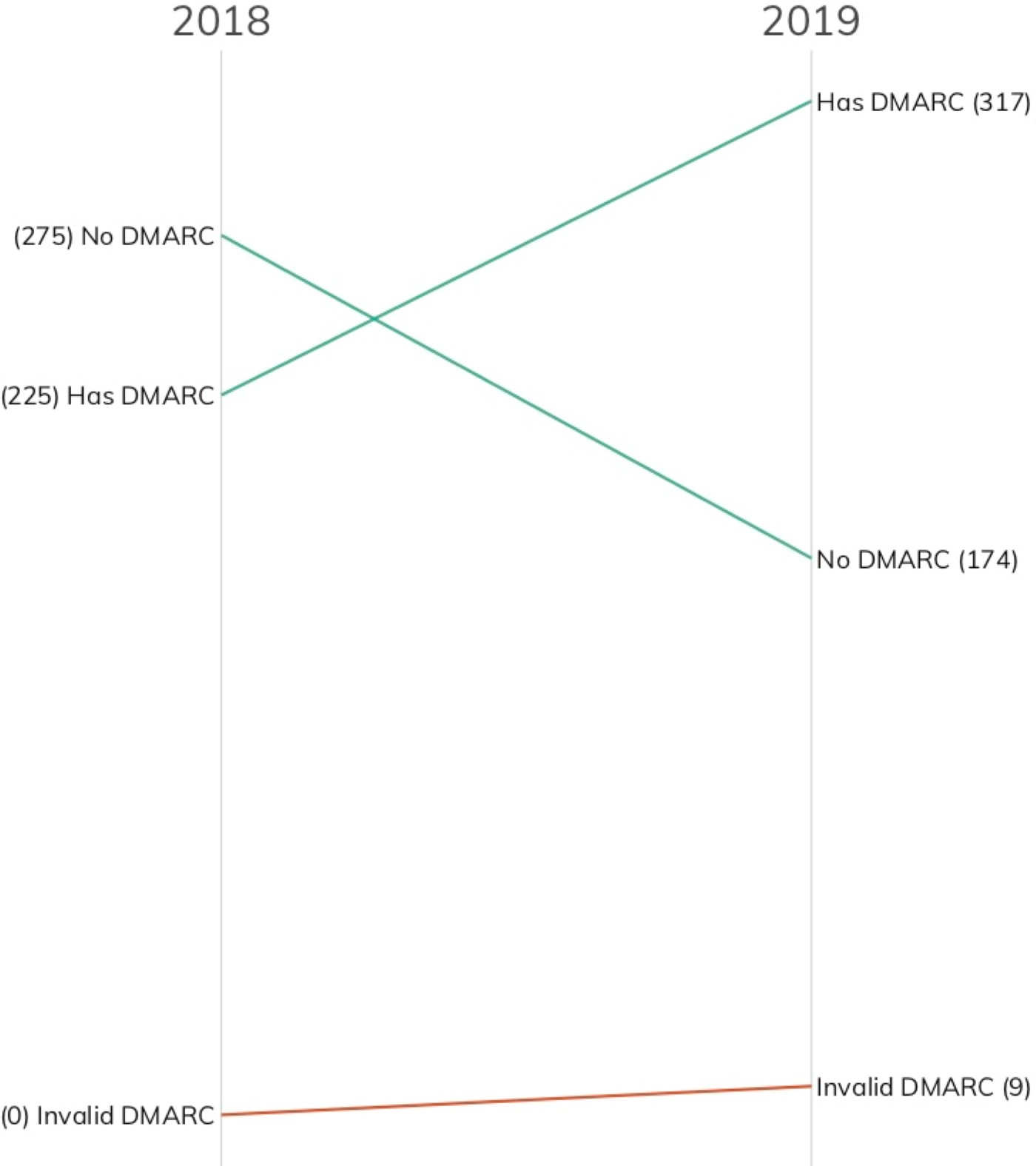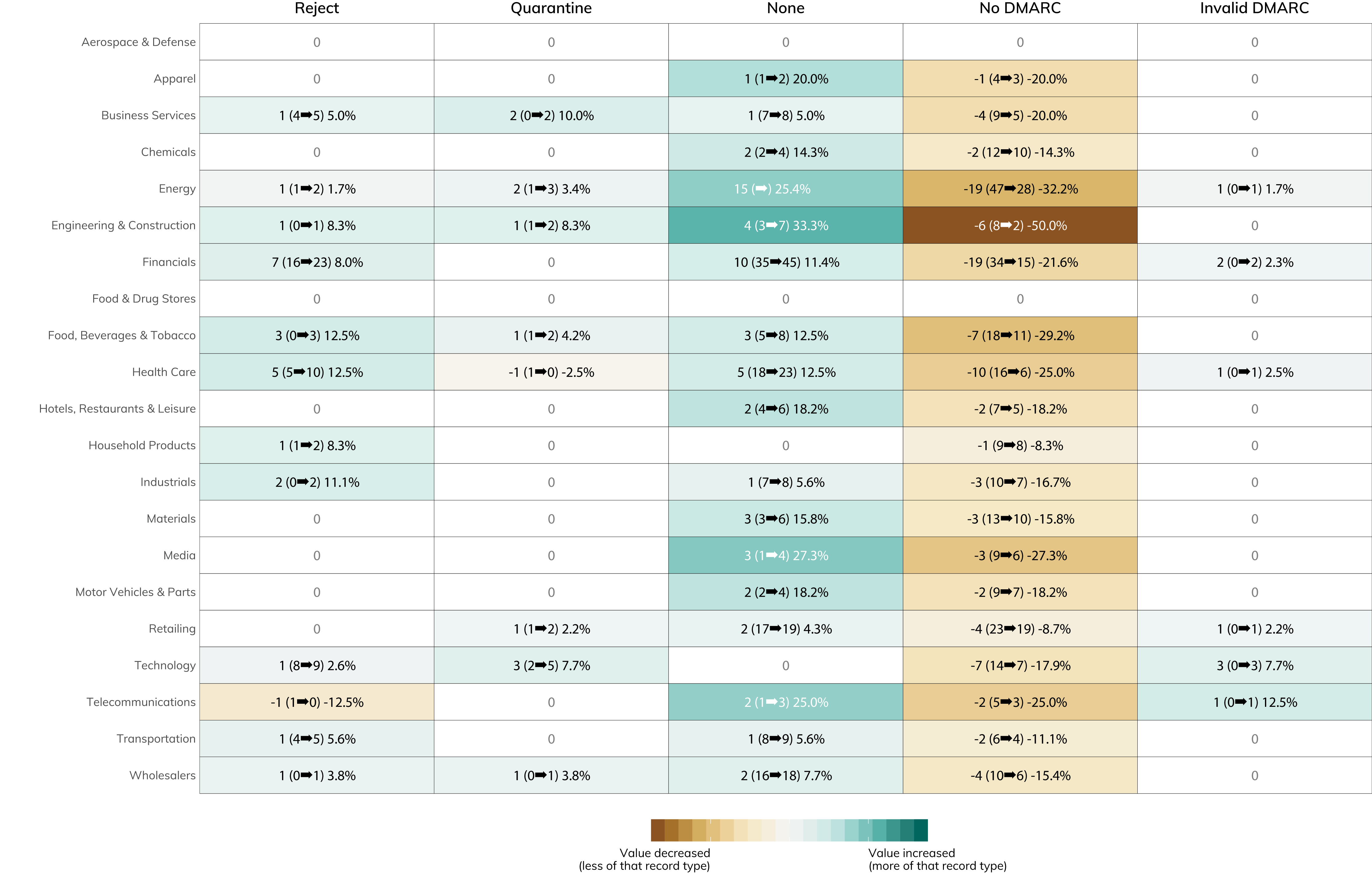Last updated at Thu, 01 Feb 2024 16:56:47 GMT
A primary goal of our Industry Cyber Exposure Reports (ICERs) is to provide insight into how well cybersecurity controls are being implemented across the globe, with the hope that this external, composite view will effect noticeable, positive change that will make us all safer when we venture online.
It’s been just over a year since we released our inaugural ICER on the Fortune 500, so we decided to take a quick look at a key control, DMARC (email safety), one year later to see whether there has been any improvement. Spoiler alert: There has been!
Before we dig into the results, we need to note that we’ve modified the way we check for DMARC since the 2018 Fortune 500 report. Previously, we did a DMARC presence and syntax validity check for each set of mail domains and/or apex domains (depending on how the organizations configured their DNS records). Unfortunately, DMARC doesn’t exist in the vacuum of a single DNS TXT record and requires accurate configurations of a combination of DNS records types to make the system work. Starting with the FTSE 250 ICER, Rapid7 Labs began doing a full check of MX, SPF, DKIM, and DMARC for each organization. These enhanced checks helped identify a serious, common configuration issue in the Nikkei 225 ICER and—after using the new methodology on the Fortune 500 domain corpus—also identified different types of issues on a handful of these domains
2017 Fortune 500 List Total Year-Over-Year DMARC Change

As seen in the figure above, 92 organizations added a valid DMARC configuration of at least “none” to their primary email domain, and a majority of these organizations now have a proper DMARC configuration in place. With the constant din of bad news in cybersecurity, this is a welcome statistic to report.
Unfortunately, bad news often accompanies good news, and our enhanced DMARC checks identified nine invalid records. Unlike the Nikkei 225 findings, these were diverse and nuanced errors ranging from improper upstream DMARC reporting configurations to mixing up DKIM and DMARC to just syntactically invalid DMARC. Having invalid DMARC is a bit worse than not having DMARC at all, as organizations may erroneously think their email setup is now much safer than it really is.
You can dive into the figure below to see which industries are doing the best when it comes to leveling up their email safety. It's great to see the relatively significant moves in the "none" category—this is a signal that 59 companies in the Fortune 500 are taking real steps to shore up their anti-phishing defenses when they haven't before.
2017 Fortune 500 Member List DMARC Status Change 2018 to 2019 (Cell value indicates year-over-year difference in record count of that record type.)

